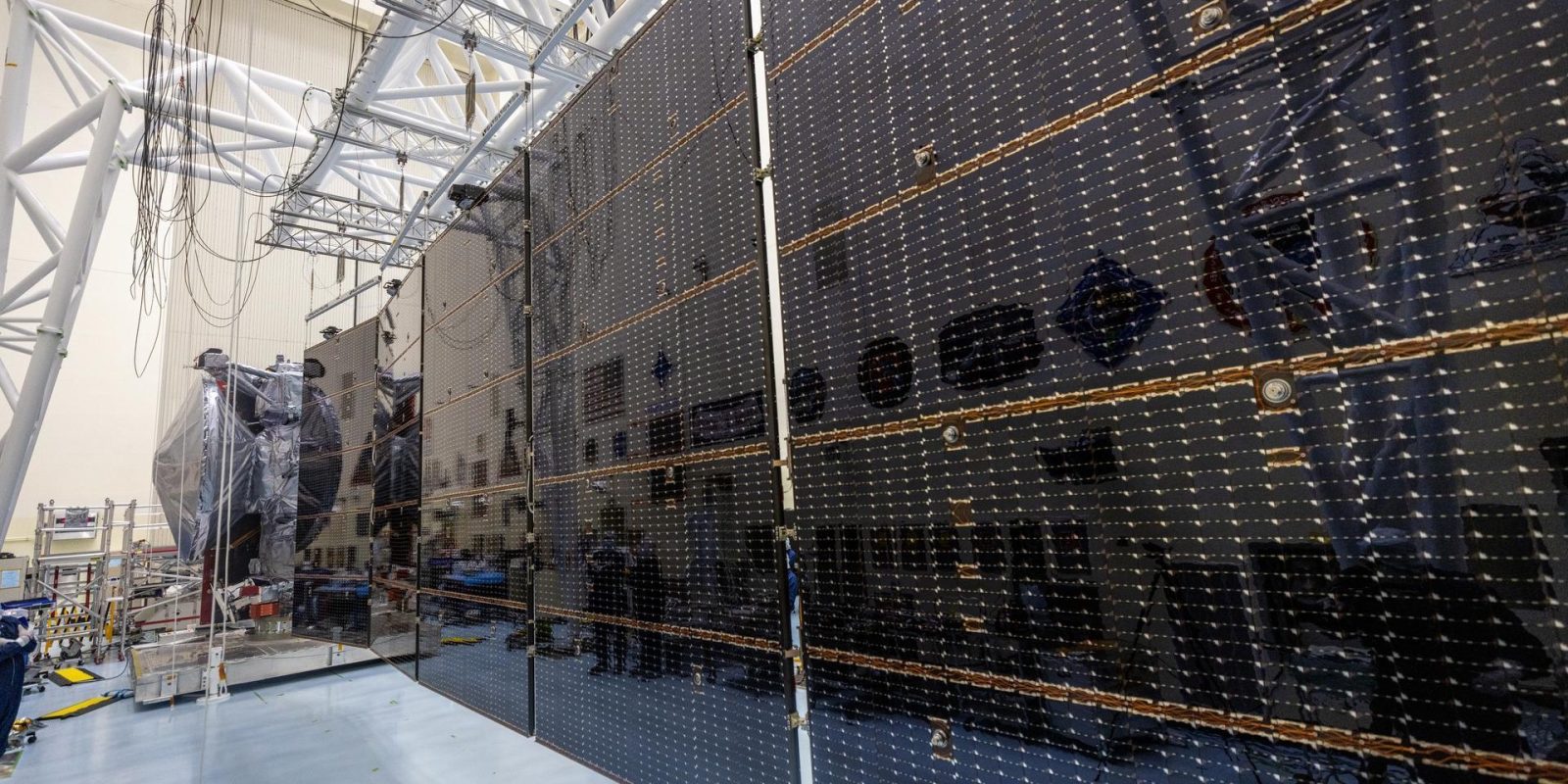
NASA’s Europa Clipper mission, set to launch in October, is designed to investigate Jupiter’s moon Europa and its potential to harbor life. Europa is of particular interest to scientists because beneath its thick ice shell lies a massive saltwater ocean, which could contain the necessary ingredients for life: water, chemical elements, and energy sources.
The Europa Clipper spacecraft was built at NASA’s Jet Propulsion Laboratory in Southern California, with contributions from several international and domestic partners. The vehicle’s propulsion system, which holds 24 engines and nearly 6,000 pounds of fuel, was developed to allow the mission to perform its extensive flybys of Europa . Its power system relies on large solar arrays, each over 46 feet long, to collect sunlight during its long journey to Jupiter. Moreover, the spacecraft is designed to withstand the intense radiation in Jupiter’s environment, with its sensitive electronics encased in a specially designed radiation vault.
Europa Clipper is currently in its final preparations at NASA’s Kennedy Space Center in Florida. Recently, technicians attached the spacecraft’s massive solar arrays, and further tests are being conducted to ensure its readiness for launch atop a SpaceX Falcon Heavy as early as October 10. Once in space, the robotic explorer is expected to take six years to reach Jupiter, using gravity assists from Mars and Earth to arrive in 2030.
Equipped with nine scientific instruments, Europa Clipper is designed to allow for detailed study of the Galilean moon’s surface, atmosphere, and subsurface ocean. Among these, an ice-penetrating radar will help map the thickness of Europa’s ice shell and detect possible subsurface lakes. Additionally, a magnetometer will measure the moon’s magnetic field to confirm the existence and characteristics of the ocean, such as its depth and salinity.
One of the mission’s primary goals is to assess Europa’s habitability. Scientists hypothesize that hydrothermal vents on the ocean floor might provide energy that could sustain life, similar to those found in Earth’s deep oceans. The spacecraft is expected to conduct at least 45 flybys of Europa while orbiting Jupiter, collecting data on the moon’s ice, surface geology, and potential water plumes that might be venting into space.
The spacecraft’s instruments include high-resolution cameras, spectrometers, and a thermal imager that is designed to search for warmer regions where liquid water might be close to the surface. By analyzing the moon’s ice and surface features, scientists hope to gain insight into its geological activity and whether material from the subsurface ocean reaches the surface.
With its vast ocean and dynamic geology, Europa is considered one of the most promising candidates for finding extraterrestrial life within our solar system. The data collected by Europa Clipper could significantly advance our understanding of ocean worlds and the possibility of life beyond Earth.
FTC: We use income earning auto affiliate links. More.




Comments